| Your browser is not supported. | ||
|
Please browse our site using any of the following options:
| ||
A Guide To Choosing And Buying Trekking Hiking Poles
If you're going trekking in Australia or overseas it's worth taking walking poles with you. They give you stability and support while you walk, making it easier on your body and a more enjoyable experience. Walking poles give hikers of all ages better balance and posture, and they take some of the pressure off your spine, knees, hips and ankles, so you can walk faster and for longer at a time.
Why should you use hiking poles?
Hikers of all ages can benefit from using walking poles:
- They give you four points of connection to the ground instead of two (your legs and poles).
- Your balance is better when walking downhill, and there's less load on your body going uphill.
- Treks which can be difficult or potentially dangerous can become a whole lot easier.
- Turns on your core muscles so they help you walk instead of your legs doing all the work.
- Less stress is places on your spine and the joints in your hips, knees and ankles.
- They're perfect for bad knees, leg injuries, hip or knee operations, and tackling tricky terrain.
- You can use your poles to clear your path when walking and to scare wild animals away.
- Some tents are designed to use your walking poles as tent poles so you can carry less.
What are the best walking poles for trekking?
There's no one-size-fits-all answer, because what's best for one person might not suit someone else.
The best walking poles for you depends on:
- What you'll be using the poles for (short weekend hikes or a serious, arduous trek?)
- What kind of conditions you'll face (will the weather be hot, rainy or snowing?)
- How long you'll be carrying the poles for (long distances for multiple days or just a few hours?)
- Whether you'll be in remote locations (so need to make sure the poles won't break)
- How long you want them to last (for a few trips or many years of trekking to come?)
How to choose the right hiking poles for you?
Working out which walking poles to buy is easier when you break it down into these five steps:
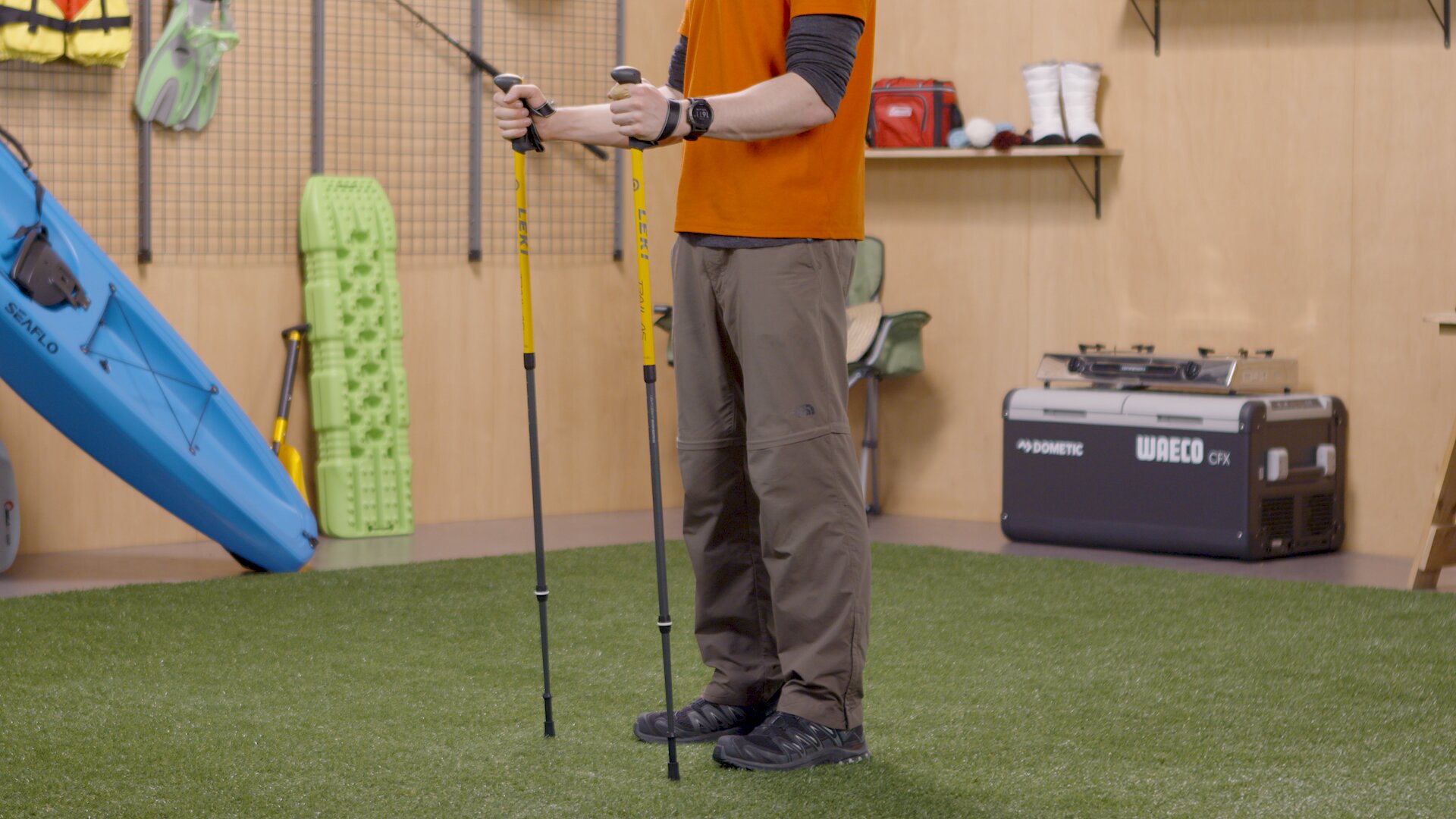
1. Type
There are a few different types of hiking poles.
Standard Poles
Standard trekking poles are usually the lightest and therefore easiest to carry.
Anti-Shock Poles
Anti-shock poles:
- Are spring-loaded so the suspension absorbs the shock when you're walking downhill.
- Are great if you have joint injuries, but the suspension makes the poles heavier to hold.
- Some have the option to turn the anti-shock off when walking uphill or on flat ground.
Compact Poles
Compact walking poles are shorter, so they're good for children and vertically challenged adults.
Foldable Poles
Foldable trekking poles:
- Fold up so they're compact enough to be carried inside your backpack.
- Usually can't be adjusted so they always stay the same length.
- Aren't as long-lasting as other poles due to their fold-up design.
- Are preferred by those who love trekking ultra-light and are happy to look after them.
- Have two or three folds (two folds makes poles more durable and longer when folded up).
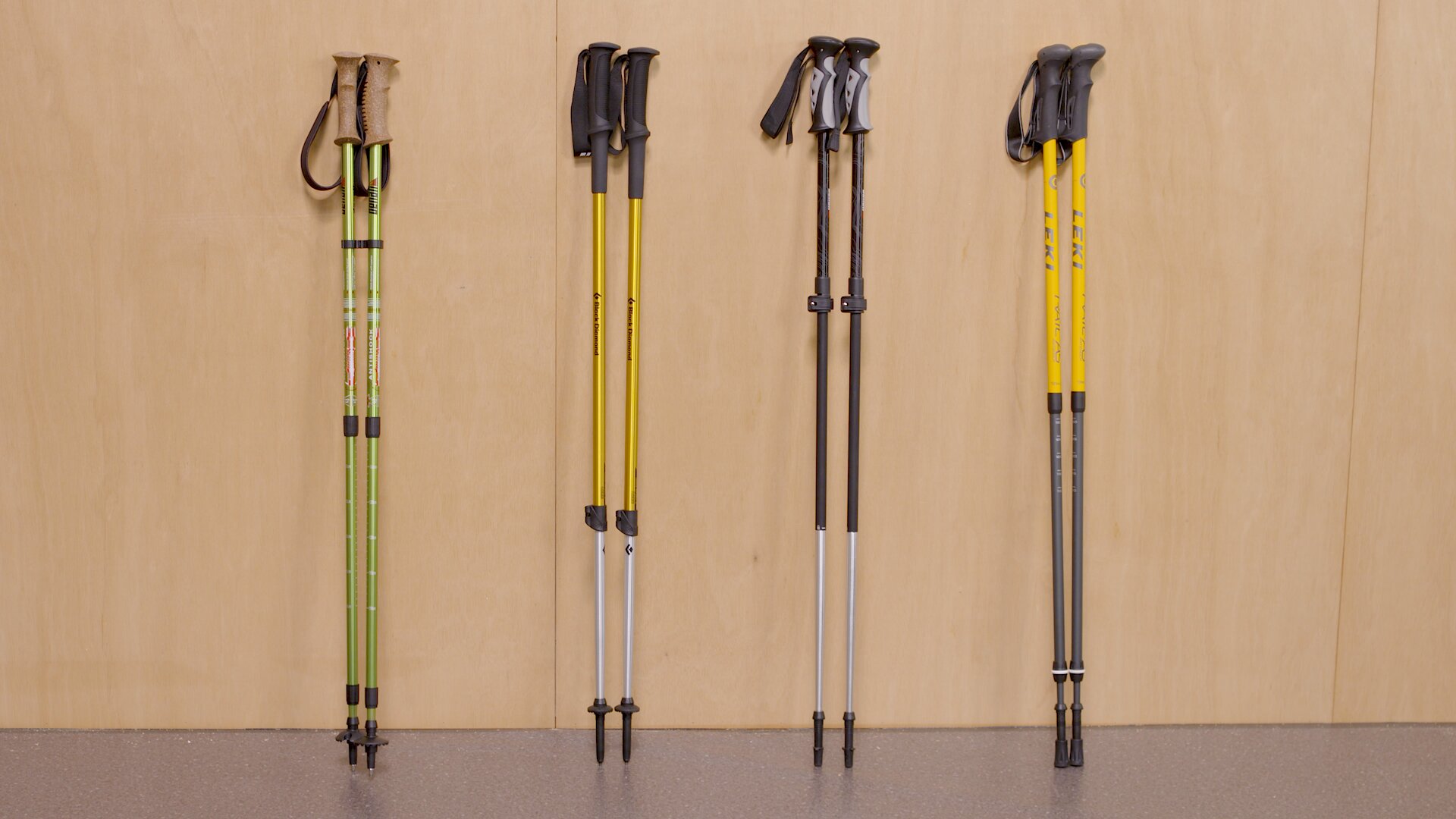
2. Size
The size of your walking poles need to suit your:
- Height - if you have longer legs you'll need longer poles - shorter legs, shorter poles.
- Strength - lighter poles are easier to carry, heavier poles require more arm strength.
- Arm length - so when your arms hold the poles your forearms are parallel to the ground (with the ground-end of both poles resting near your feet).
Walking poles can have:
- A fixed length - being one-length makes them light and durable (but less efficient on hills).
- An adjustable length - to suit the terrain (but this makes them heavier and less durable).
Adjustable Poles
Adjustable poles need to be:
- Shortened 5-10cm when you're walking uphill.
- Lengthened 5-10cm when you're walking downhill.
If you're going for adjustable poles, try changing the length of a few different options in your nearest Anaconda store so you know how easy it is to use the locking mechanism:
- A twisting lock - securely locks into place but can be tricky to adjust with gloves on.
- A clamp lock - makes changing the pole length quick and easy, even wearing gloves.
Hand Grips
The grips at the end of the poles you hold on to need to suit the size of your hands - smaller grips are better for smaller hands, and larger hands need larger grips.
Men's, Women's and Kids' Walking Poles
Some poles say they're for men, women or children, but ultimately this is just based on size and colour, so don't take too much notice of this. Just choose whichever poles suit your size and colour preferences, and make you most comfortable.
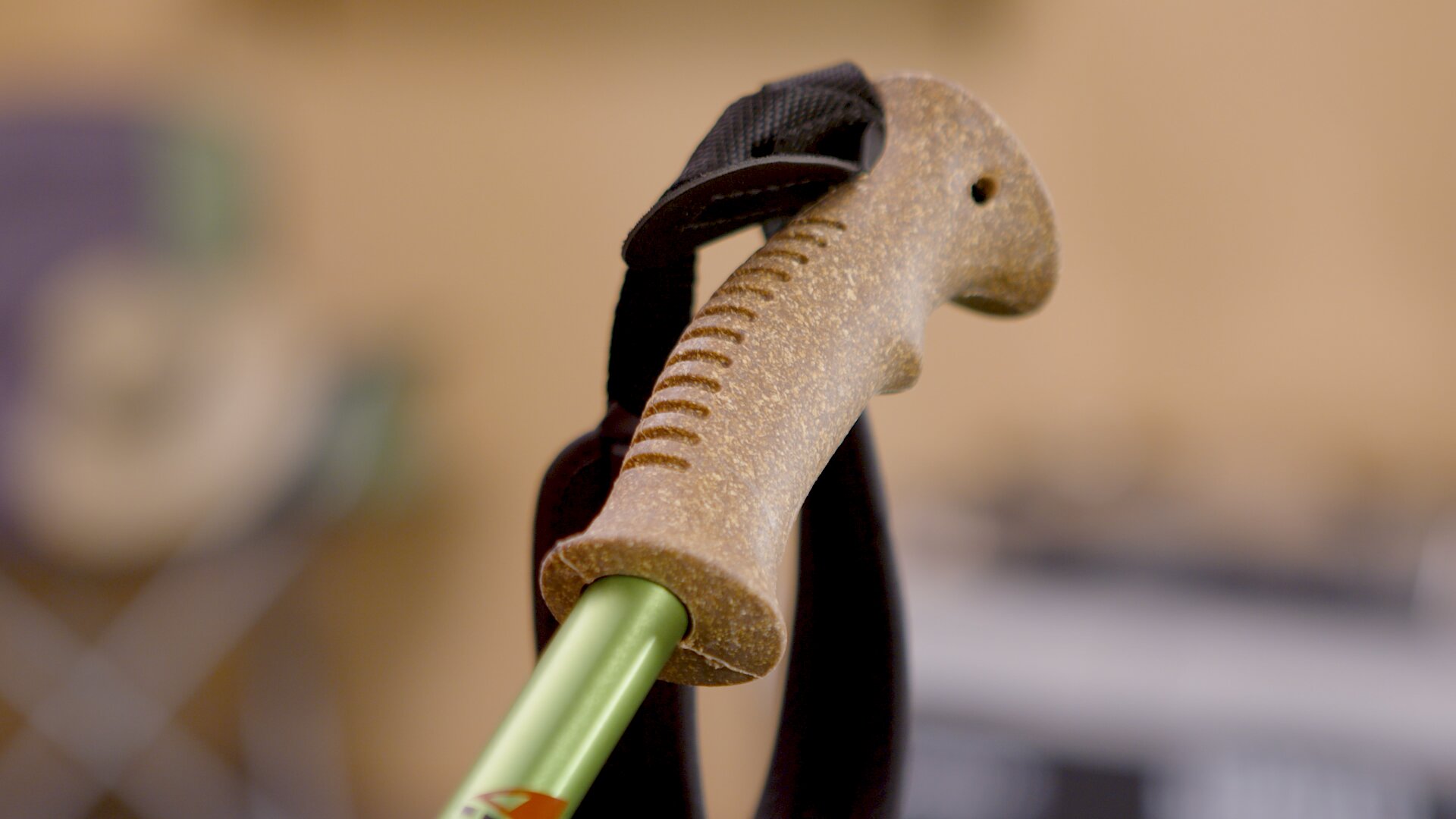
3. Materials
The materials your trekking poles are made from determine:
- How heavy and comfortable they'll be when you're carrying them.
- How well the poles will handle ground conditions like snow or mud.
- How durable and long-lasting your walking poles will be.
Aluminium Poles
Poles made from aluminium are:
- Strong and lightweight.
- Best for vibration absorption.
- Good for longer hiking journeys.
- At risk of bending under a lot of pressure.
- For those hiking remotely so can't risk breakages.
Carbon Fibre Poles
Poles made from carbon fibre are:
- The lightest so easier to carry on longer treks.
- Stronger than aluminium in most conditions.
- Better for hiking in trickier terrain.
- Not as good at vibration absorption.
- At risk of snapping under too much pressure.
Hand Grips
The materials the hand grips are made of determine how comfortable they'll be to hold, so:
- Try out different poles with ergonomic grips for comfort in your nearest Anaconda store.
- Factor in the conditions you'll be hiking in when weighing up different grip materials.
Rubber Grips
Rubber hand grips are:
- Comfortable and easy to hold.
- Less durable in the long term.
- Best for cold weather as they insulate and warm hands.
- At risk of rubbing and chafing in hot weather.
Cork Grips
Cork hand grips are:
- Made from natural, breathable cork.
- Good for summer because they absorb hand moisture.
Foam Grips
Foam hand grips are:
- Lightweight and soft so they feel nice to hold onto.
- Good for summer because they absorb hand moisture.
- Not very durable so won't last as long as other materials.
Ribbed Grips
Grips that have a ribbed pattern on the handle:
- Vibrate less in your hands as you walk.
- Help you go for longer without fatigue.
Wrist Straps
Poles with a strap that loops around your wrist:
- Are harder to drop and lose as they stay attached your hands when you let go of the grips.
- Make taking photos, drinking water, eating snacks and making phone calls a lot easier.
- Are usually made from strong, durable nylon, and they're more comfortable if padded.
- Sometimes absorb sweat or have a safety release that undoes the straps if you get caught.
- Should always be attached by feeding your hand up through the strap from underneath.
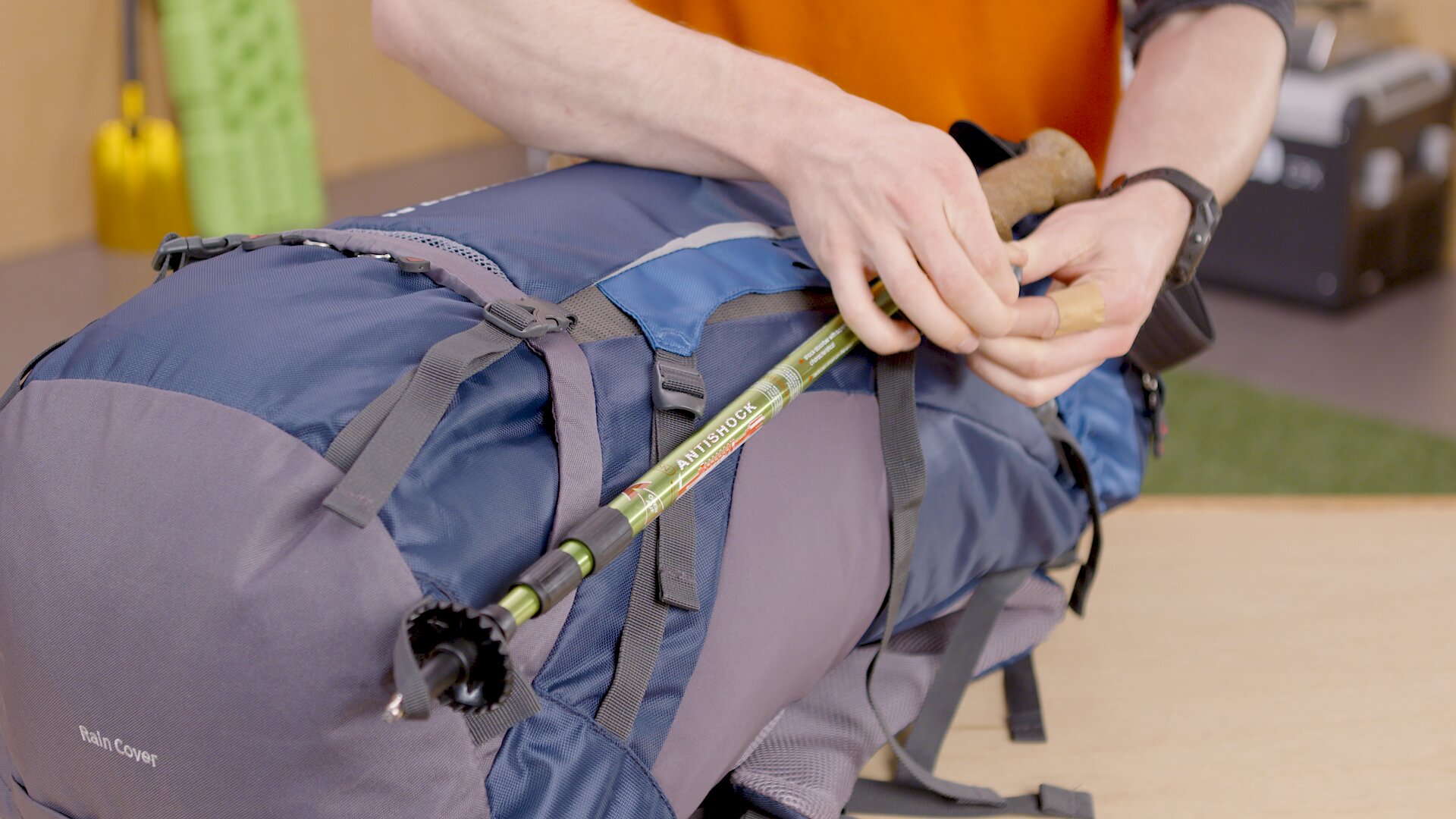
4. Tips & Baskets
The tips and baskets on the ground-end of both of your walking poles:
- Give you more grip, stability and power when you're walking.
- Need to suit the conditions you're trekking in (how hard or soft the ground is).
Tips
The tips on the ground-end of the poles:
- Give you grip so your connection to the ground via the poles feels sturdy not wobbly.
- Should be changed throughout the hike, so take a few options and carry them in your pack.
- That are made from carbide are more durable and give you good grip on slippery surfaces.
- That are made from rubber are better for firmer surfaces, and they help absorb vibrations.
- Can have a rubber protector for less environmental impact and protection in your bag.
- Pointy tips are good on ice but will damage easily on solid ground so remove straight away.
Baskets
The two circular-shaped baskets that go on the ground-end of your poles just above the tips:
- Should be used on soft ground, such as snow or mud, so your poles don't sink in.
- The softer the ground, the bigger the basket you should use to create more surface area.
- Make sure you remove the baskets before you start walking on hard ground again.
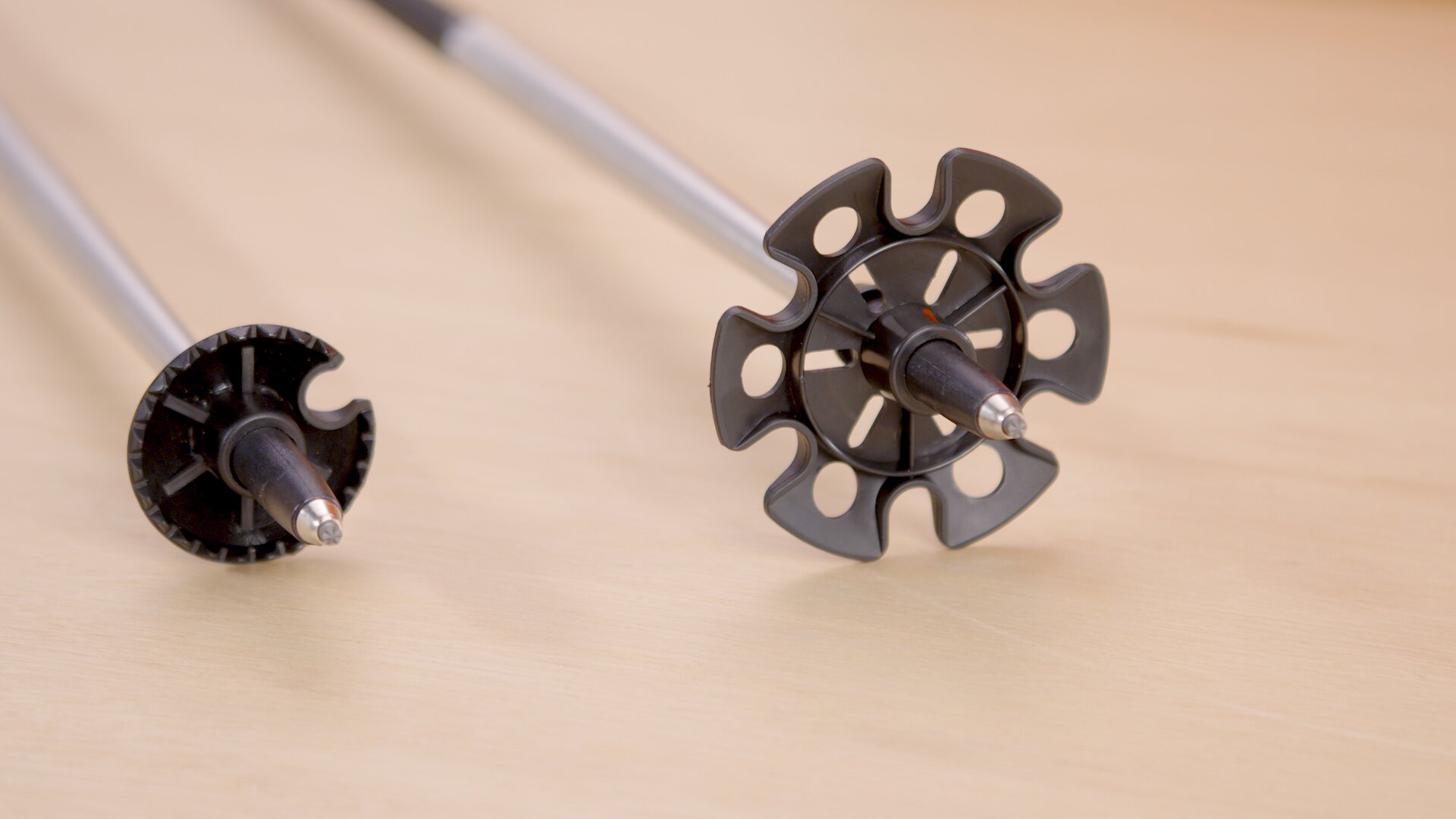
5. Quality
When you're weighing up which walking poles to buy, think about quality versus cost:
- Shock-absorbing poles are more expensive but reduce the impact of walking on your body.
- Aluminium poles are cheaper than carbon fibre poles but heavier to carry.
When it comes to how much you should spend:
- If you just want trekking poles to use for short hikes every now and then, a cheap one should do the trick.
- Cheaper poles tend to be less shock-absorbing and not adjustable, so you get what you pay for.
- If you're an avid hiker doing lots of treks in different conditions you'll need to buy more tips and baskets so you can put the right ones on to suit the conditions.
- For comfortable hiking and travelling for years to come, it's worth spending more on good-quality walking poles.
How much are walking poles?
Anaconda has walking poles from $40 to $170.
When you go to the Camping & Hiking section on the Anaconda website, select Equipment (or just type Walking Poles into the search box). You'll see tick box filters down the left hand side of the page which make working out which poles to buy easier and faster because you can choose to filter what you see by:
- Price - so you only see poles within your budget on the page.
- Deal - so you only see poles that are on sale or at clearance prices.
- Colour - so you only see poles in the colours you like.
- Brand - so you can find a specific brand you like.
How do you use hiking poles?
Walking pole basics:
- Swing your arms and walk like you normally would (as if walking without walking poles).
- As you take a step with your left foot move the right pole forward (right foot, left pole).
- When going up or down a steep hill use both poles together at once for more stability.
- Don't grip the handles too tightly or they'll rub on your hands, causing blisters and chafing.
Other Camping & Hiking Essentials
Check out Anaconda's range of Camping & Hiking products available online or visit your local store.